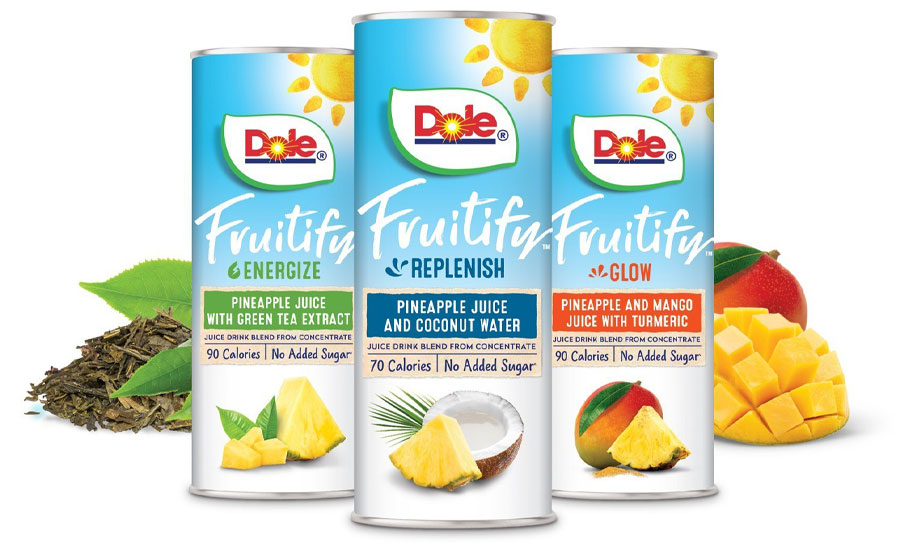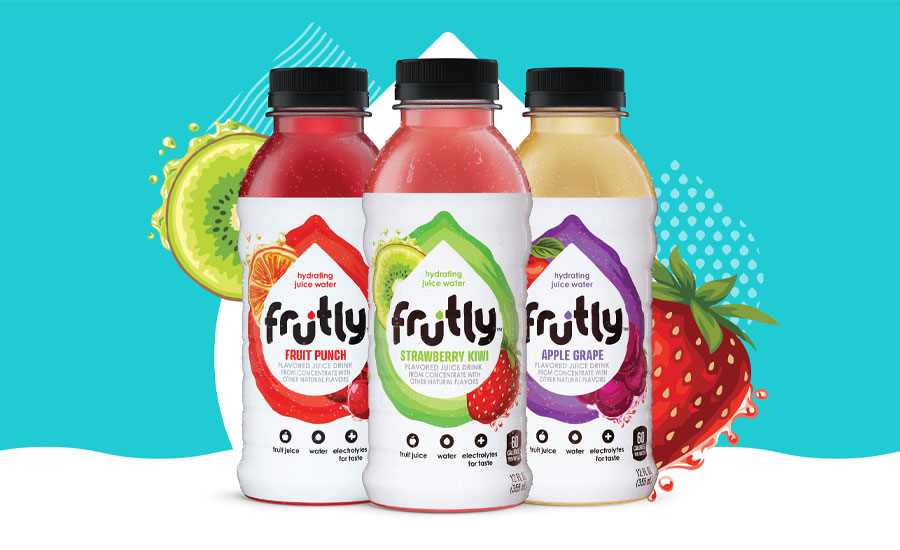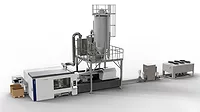Category Focus
Juice manufacturers address consumer concerns with fortification
Calorie, sugar content challenges juice market

Photo by silviarita from Pixabay/courtesy of Canva
In the 1980s and early ‘90s, Hanna-Barbera reimagined some of its classic cartoon productions with younger versions, including “The Flintstone Kids,” “A Pup Named Scooby-Doo” and “Yo Yogi!” to give viewers a new take on classic favorites. As the juice and juice drinks category sees increasing competition from emerging beverage categories, beverage-makers, too, are looking to reimage this classic category.
“The overall juice market has continued to struggle in recent years on account of changing consumer preferences,” says Dmitry Diment, senior analyst at New York-based IBISWorld. “Americans have increasingly moved toward healthier consumption patterns, which has hurt traditional drinks high in calories, sugar and additives. Still, as companies have sought to introduce healthier options and the rise in spending since the outset of the pandemic, overall juice production revenue rose 0.1% in 2020 and is projected to rise 0.4% in 2021.”
Diment notes that much of this performance can be attributed to the effects from the pandemic on shopping habits, particularly within the grocery and supermarket channel.
“According to IBISWorld estimates, grocery stores and supermarkets represent the largest market for juice products, accounting for 36.5% of revenue in 2021,” he says. “Another significant market includes warehouse clubs and supercenters, which is estimated to account for 27.9% of the juice product market in 2021. Both of these markets have benefited from societal reorientations during the pandemic.”
(Individual brands)
| DOLLAR SALES | % CHANGE VS. PRIOR YEAR | MARKET SHARE | % CHANGE VS. PRIOR YEAR | |
| Capri Sun | $485,395,824 | 19.6 | 43.2 | 2.2 |
| Kool-Aid | $308,391,810 | 9.7 | 27.5 | -1 |
| Honest Kids | $103,666,583 | 15.8 | 9.2 | 0.2 |
| Hi-C | $63,145,235 | -1.1 | 5.61 | -0.8 |
| Jumex | $38,456,698 | 19 | 3.4 | 0.2 |
| Total sales* | $1,122,485,234 | 13.7 | 100 | 0 |
*Includes brands not listed.
Source: Information Resources Inc. (IRI), Chicago. Total U.S. supermarkets, drug stores, gas and convenience stores, mass merchandisers, military commissaries, and select club and dollar retail chains for the 52 weeks ending Oct. 31, 2021.
Noting the soft performance within the juice and juice drinks category, Gary Hemphill, managing director of research for New York-based Beverage Marketing Corporation (BMC), says the overall impact on juice from the pandemic is more minimal when foodservice sales are taken into account.
“Sales did shift from on-premise to take-home channels like with most other beverage categories but overall performance has remained weak,” he says.
When looking closely at the respective segments and sub-segments for juice and juice drinks, data shows fragmented results. For the largest segments ― shelf-stable bottled juices and refrigerated juice and juice drinks ― sales totaled $7.8 billion, a 4.2% increase, and $7.6 billion, a 4.7% increase, respectively, for the 52 weeks ending Oct. 31, 2021, in total U.S. multi-outlets tracked by Chicago-based Information Resources Inc. (IRI). For bottled juices, however, volume sales were down 0.8%, while refrigerated juice volume sales were up 3.7%.
Although from a smaller base, aseptic juices outperformed each of these segments with a 14.1% increase in dollar sales, totaling $1.6 billion, and a 10% increase in volume sales. The juice and juice concentrate segment also has fared well in the past year. According to IRI data, the segment’s dollar sales totaled $34 million, a 20.2% increase, while its volume sales were up 31.2%.
Shelf-stable canned juices, however, experienced a more challenging year as sales were down 4%, totaling $1.3 billion, with volume sales declined 9.1%, according to IRI data.
(Individual brands)
| DOLLAR SALES | % CHANGE VS. PRIOR YEAR | MARKET SHARE | % CHANGE VS. PRIOR YEAR | |
| Simply Lemonade | $526,200,792 | 9 | 49.4 | -1.4 |
| Private label | $174,189,233 | 38.1 | 16.3 | 3.1 |
| Minute Maid Zero Sugar | $60,430,822 | 83.8 | 5.7 | 2.2 |
| Minute Maid Premium | $54,417,870 | -13.8 | 5.1 | -1.5 |
| Simply Light | $45,894,169 | 17.2 | 4.3 | 0.2 |
| Total sales* | $1,066,184,527 | 12.1 | 100 | 0 |
*Includes brands not listed.
Source: Information Resources Inc. (IRI), Chicago. Total U.S. supermarkets, drug stores, gas and convenience stores, mass merchandisers, military commissaries, and select club and dollar retail chains for the 52 weeks ending Oct. 31, 2021.
Beyond sales data, it looks as though consumer interest in juice and juice drinks also is on the decline. Citing data from Spoonshot’s 28,000-plus open, diverse data sources, Ranjana Sundaresan, lead research analyst for the Minneapolis-based company, notes that from 2016 to October 2021, overall interest in the category declined 29%.
“Interest fell by 4% over the 12 months to October 2021,” she says. “A major contributing factor to the declining interest in juice is growing concerns over high sugar and artificial additives content. We also looked specifically at a bifurcation of media channels into business and consumer media. Business interest (based on references in articles and blogs from trade press and business media channels) in juice and juice drinks has declined by 31%, though it revived by 20% over the 12 months to October 2021.
“On the other hand, consumer interest (based on articles and blogs by influencers and in consumer media channels) in juice and juice drinks grew by 24% from January 2016 to October 2021, though in the 12 months to October 2021, interest declined by 21%,” Sundaresan continues.

Image courtesy of Dole Packaged Foods
Enhanced nutrition, healthier refreshment
As experts have noted, sugar content as well as other health and wellness concerns have challenged the juice and juice drinks category.
“The trend toward healthy alternatives to carbonated soft drinks (CSDs) has led some consumers to substitute those products with this industry’s offerings,” IBISWorld’s Diment says. “Over the five years to 2021, the healthy eating index, which measures the percentage of a recommended diet that an average American consumes, has grown slightly as more consumers have adopted healthier eating habits.
“Growing consumer focus on fruit juices’ high sugar content has negated its previously healthy reputation,” he continues. “Consequently, fruit juices decline in popularity has led producers PepsiCo Inc. (PepsiCo) and the Coca-Cola Bottling Co. UNITED Inc. to direct their focus to other non-CSDs, creating fresh external competition for bottled water and innovative RTD tea and coffee varieties.”
BMC’s Hemphill also denotes the adverse effect that sugar content is having on the juice market. “Today’s consumers want less sugar and many juices have high levels which has worked against the category,” he says.
Spoonshot data also suggests that sugar content is having a negative effect on the juice category.
“High sugar content is one of the leading reasons for the decline of the juice market,” Sundaresan says. “Thanks to growing awareness of the adverse effects of consumption of too much sugar, consumers are starting to become more concerned about hidden sugars in categories that were once considered to be healthy.
“While juices have seen declining interest among consumers, they are showing greater interest in sugar reduction,” she continues. “Based on Spoonshot’s data, interest in sugar reduction increased by 16% over the 12 months to October 2021 and has nearly doubled (96%) since 2016.”
Although increased competition and sugar content has challenged juice where it currently stands, experts note that opportunities still remain for the category to align with consumers’ wants and needs.

Image courtesy of PepsiCo
“Younger consumers, primarily the millennial generation, want more than just traditional juice,” IBISWorld’s Diment says. “They want an innovative blend of flavors that is both nutritious and delicious. Due to these changes, the industry has updated its product offerings. Tropical flavors such as mango and pineapple have been on the rise as consumers seek exotic and creative healthy alternatives.”
In this realm, Dole Packaged Foods released DOLE FRUITIFY, a line of tropical juice drinks crafted to deliver enhanced nutrition with functional ingredients like green tea and turmeric. With fewer than 100 calories in each can, DOLE FRUITIFY are 65% juice and contain no added sugar or high-fructose corn syrup, are non-GMO and kosher. DOLE FRUITIFY is available in three varieties: GLOW, a pineapple and mango juice with turmeric; REPLENISH, a pineapple juice and coconut water; and ENERGIZE, a pineapple juice with green tea extract.
In BMC’s “The Fruit Beverage Market in the U.S.” report, the market research firm highlights several strategies that are inspiring new releases within the juice and juice drink category.
“One is to introduce lower-calorie versions of existing products by mixing in coconut water (which is considered a juice by the USDA),” the report states. “Lemonade has been one of the few hot flavors in fruit drinks in the past decade or so (even it has slowed somewhat recently), prompting steady new product activity. Another area for marketers to experiment with is organic. Relatedly, the success of Honest Tea has prompted competitors to introduce healthier fruit drinks in pouches for kids.”
This past summer, Juicy Juice, a brand of Harvest Hill Beverage Co., expanded its portfolio with two new flavors: Berry Lemonade and Watermelon. The new juices are made with 35% less sugar than the leading juice and contain an excellent source of vitamin C, the company says.
PepsiCo also is looking to engage with healthy hydration for non-adults with one its newest creations: Frutly, a hydrating juice water designed for teens. A newcomer to the juice aisle, Frutly is made with water, fruit juice and electrolytes for taste to provide flavorful hydration and a good source of vitamins C and E, the company says. The hybrid beverage contains no added sugar or artificial sweeteners, and is available in three flavors: Strawberry Kiwi, Fruit Punch and Apple Grape.
As the juice and juice drinks contends with new categories and consumer concerns, the path to purchase likely will stem from an innovation pipeline driven by healthy hydration and fortifications.
Looking for a reprint of this article?
From high-res PDFs to custom plaques, order your copy today!





